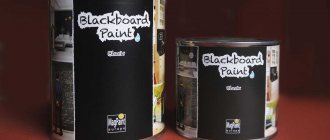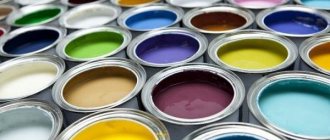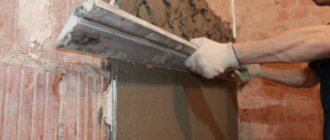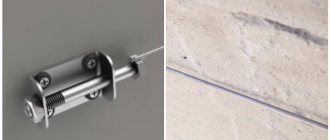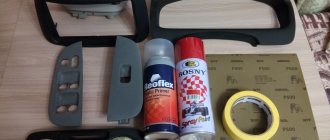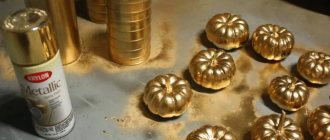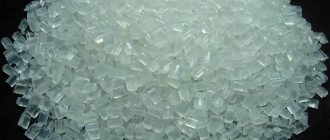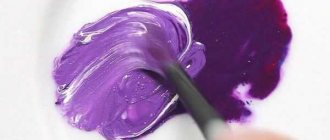Modern road traffic requires pedestrians and cyclists to adhere to safety measures, which include wearing reflective clothing. Separate headbands, bracelets, and helmets are also on sale. But ready-made reflective paint, sold both in convenient aerosol cans and in traditional cans, deserves special attention. Using such materials, it will not be difficult to make a glow-in-the-dark pattern on fabric or cover a roadside fence with a layer of reflective varnish. However, the scope of this amazing paint does not end there.
Areas of application
Paint with a reflective effect is used for marking or decoration purposes, respectively, where reflection of light is required. A nice feature of this material is that it dries quickly even in harsh climatic conditions. To make the reflection effect more pronounced and lasting, a primer is usually used before applying paint. If reflective material is used for decoration, then it is recommended to additionally apply a colorless varnish on top of its coating - this will not only consolidate the effect of light reflection, but also give the surface a glossy texture.
The most widely used is aerosol reflective paint in cans. This is due to the fact that its application does not require much labor, special skills or significant time investment. The main advantage of aerosol varnish is that it is ready for use immediately after purchase. But regardless of the external form, be it a can or a jar, compositions with the property of “glow in the dark” are used to solve many problems, including:
- creation of markings near schools and on the territories of enterprises;
- applying markings to vehicle elements;
- painting helmets or uniforms of motorcyclists and cyclists;
- decoration of facades, for example, facing tiles, panels or ordinary concrete surfaces;
- designation of road signs and highway surfaces;
- decorating the premises of private houses, clubs, bars and various entertainment venues;
- creating works of art - from glow-in-the-dark paintings to spectacular body art (in the latter case, special coloring compounds are used that meet a number of hygienic standards).
The increasing popularity of reflective varnish is influenced by the fact that roads are filled with an increasing number of cars. Thanks to the varnish, movement on and near roads in the dark becomes safer for both pedestrians and drivers. Therefore, light reflective coating becomes not a luxury , but a concern for lives . In order to understand this more deeply, it is enough to imagine how the situation will change if the road, its markings and signs cease to be noticeable.
An advantage to all of the above is that a coloring mixture with a similar effect can be easily created with your own hands at home. And, of course, you can use it for your own purposes, not necessarily related to road traffic. There's nothing complicated about painting simple, portable objects such as children's toys - it will give the child the opportunity to look at them in a completely new way under the cover of darkness. The main thing is that because of the interest he shows, you don’t have any difficulty sending your baby to bed. Another option is to make a luminous drawing on the wall so that the child is not afraid to sleep in the dark.
Reflective paint for metal and concrete: instructions on how to make it yourself, video and photo
Now add the remaining pine needle concentrate to the liquid and boil the composition again. As a result, a yellow liquid called phosphor should appear in the container. Now you can mix it with paint and start decorating the room. For a faint glow, it is enough to use half the liquid.
Areas of application of reflective paints
Reflective paint is simply irreplaceable in some cases, for example, for marking moving objects or fences. In addition, the material looks great in the interior, however, for these purposes it is better to use a luminescent composition, see. As for the coating process itself, as we found out, it is not anything complicated.
For more information on this topic, watch the video in this article. Construction of a foundation Construction of a foundation in winter Types of foundations Construction of houses Brick house Construction of foam concrete Construction of baths Roofing Finishing of facades.
Home Articles. Reflective paint for metal and concrete: instructions on how to make it yourself, video and photo. The most popular use of luminescent paints is to create glowing star and galaxy designs on the ceiling. As with any hobby, each person prefers…. The use of sympathetic invisible ink implies a recording that is indistinguishable under normal circumstances, but appears after photography, chemical or physical development.
This is... Boron phosphor - independent production of luminous photoluminophore. I know how to get into the cart without showing this window. Home Articles Do it yourself.
Composition and characteristics
Any reflective varnish owes its “magical” properties to a special pigment in the form of a ball, which is mixed with a transparent varnish. The task of pigments is reduced to the following: beams of light entering them are reflected, as a result of which the painted surface glows.
It is generally accepted that the ideal proportion of pigment balls and a binder in the form of varnish for working with an aerosol spray gun is 1:3 (where 1 part is pigment, and 3 parts are dye). However, some people mistakenly believe that the more light-returning balls, the better the glow effect. But that's not true. There is a clear proportion, tested by the hands of professionals and many years of experience, which is better to adhere to. If dilution is necessary, use toluene or xylene.
The composition of varnishes with a glow effect differs in the basis of each of them, and you should focus on it before purchasing and carrying out work. The varnish base must be chosen depending on the type of surface to be coated: concrete, plastic, metal, wood, glass or road surface.
The packaging of the painting product must contain detailed information about the composition and surfaces for which it is intended. For example, when working with concrete, you should give preference to acrylic-based paint, and when working with metal, you should give preference to alkyd-based paint. For the reflective balls themselves, it does not matter what base they are mixed with, be it alkyd, polyurethane or acrylic varnish - their properties do not change.
The average consumption of coloring materials with a reflective effect is 250 grams per 1 square meter. The average drying time at a temperature of 22 degrees Celsius, as a rule, does not exceed 60 minutes. Prices for both aerosol products and those applied with a brush vary greatly, making it difficult to give them an unambiguous assessment.
Main stages of coloring
You can quickly stir the paint using a drill with a mixer attachment.
Pouring paint into the tray
Roll the roller over the paint
Step 3. The first application should be carried out in a thin and uniform layer. In this case, the paint is carefully spread over the base with a roller or brush. Each subsequent strip is applied overlapping the previous one by several centimeters.
By the way! It will be interesting to know: Sealants for seams in a wooden house
Step 4. After completing the surface treatment of the facade, the paint must be allowed to dry.
Apply the second layer
Step 6. The final stage of painting is applying varnish to the reflective surface. Thanks to this, the facade will retain its attractive appearance for a long period of time.
Prices for paint sprayers
Types of paints
Today, there are two widely known types of coloring mixtures with the effect of light reflection. All of them, at first glance, are very similar, but each product has its own advantages, operating conditions and its own mechanism of the glow phenomenon. Before purchasing it, it is better to familiarize yourself with information about each of these types.
Luminescent varnishes
Luminescent varnish accumulates light from the sun and artificial illuminators, and then reveals it in the dark for 8-12 hours. It reflects soft, eye-pleasing light without even requiring additional ultraviolet exposure. Thanks to the phosphor, light energy accumulates throughout the day, working autonomously in the dark and thereby allowing partial savings on electricity. As a rule, the colors issued are green, blue and milky.
Due to the fact that the pigments of such varnishes sometimes contain harmful substances, the use of luminescent compounds is limited. There is an opinion that they should not be used in bedrooms, children's rooms and kitchens. This is not always justified and relevant only if phosphorus acts as an accumulator in the composition - in this case, it is better to use the coloring material only in outdoor decor, outdoors.
Fluorescent compounds
Paints and varnishes of this type work somewhat differently: their coating does not accumulate light energy, but exhibits a glowing effect only when rays of sunlight or artificial light hit it. An example of this effect can be seen on the road at night, where road signs, indicators and markings begin to glow when hit by headlights.
Fluorescent dyes are used not only for roads, but also for clothing. For example, in some cases they are used to paint work clothes. This type of paint is also in demand when decorating the premises of entertainment establishments, where when ultraviolet lamps are turned on, the painted interior takes on an extraordinary appearance.
Effect on the body
As for luminescent paints , their factory production is a complex technological process, which has its own costs. Pay attention to the presence of phosphorus. If it is included in the paint and varnish material, then it is better not to use it indoors or on clothing; at most, give it a place in the yard (preferably where children do not play).
The glow of most modern reflective materials is due to the formation of defects in the crystal structure of their substances. These defects are formed by adding activator impurities. At the same time, no radioactive elements, as was once upon a time, are added to reflective paints. Light radiation occurs in the visible spectral range, which is why they do not harm human health.
There are even specific luminous compositions for the body that are applied directly to the skin, but they must meet hygienic standards and must also be accompanied by special safety certificates. Therefore, it is impossible to give a definite answer about the safety of coloring products - you must always proceed from the composition.
Solutions options
There are at least two ways to give your ceiling reflective properties, and both of them are perfect for implementing the idea yourself:
- Assembly and installation of a ceiling structure made of reflective panels or installation of a stretch ceiling.
- Painting the ceiling with a special paint that has the ability to effectively reflect light.
Handmade production
It’s possible to make reflective paint at home , although even in this case you won’t be able to do it without going to the store. To work on its creation you will need:
- respirator, safety glasses and gloves (remember that safety comes first);
- phosphor (element with a reflective effect);
- colorless, completely transparent varnish;
- solvent;
- glass or ceramic dishes for convenient mixing of all ingredients.
It is not difficult to find all of the listed components in a ready-made set in a building materials store, with the exception of protective equipment (however, this does not mean that they should be neglected). Having collected all the components, you can begin preparing the glowing mixture:
- Pour clear varnish into the bowl;
- Pour in powdered phosphor, trying to achieve a ratio where there is 70% varnish and only 30% phosphor;
- Add just a little solvent to the resulting mixture. Its volume should not exceed 1% of the total mass of the mixture;
- Mix the entire solution thoroughly.
In fact, it is easier than it seems, since it is enough to read the instructions included with the components or ask the building materials seller for advice. One has only to add that depending on the surface that you are going to paint in the future with the prepared mixture, the compositions will differ.
Surface preparation is the main stage of facade painting
Before painting the facade, it is necessary to carry out preparatory work, which includes several stages:
- strengthening the base to be painted;
- applying primer solution.
Let's consider the need and ways to strengthen the foundation.
The paint coating must be applied to a dense and durable surface. Only in this case is its durability and resistance to adverse weather conditions guaranteed.
Determining the strength of the base
A ringing sound indicates the reliability and strength of the plaster. If you hear a dull sound, it means the plaster is holding weakly.
We determine the strength of the plaster and remove the crumbling coating
Methods of strengthening
The method of strengthening the base to be painted directly depends on its type. If we are dealing with plaster, then it is necessary to carry out work to seal existing seams and cracks, as well as remove layers that are not firmly attached, following the following algorithm:
Filling the crack with mortar
Prices for mixtures for leveling walls and ceilings
Removing old paint
Before painting the façade must be washed
Preparing brickwork for paint and varnish work involves treating the surface with a special protective compound. This will extend the life of the painted surface and keep it presentable for a long time.
Preparing a brick wall for painting
How to apply primer
Primer before painting
Video - Ceresit façade primer
The types of reflective paints can be clearly seen in the table.
Fluorescent effect paint
Comparative characteristics of luminous paints from different manufacturers
AcmeLight Façade - luminous façade paint
Application technique
Most often, such paints and varnishes are applied to facade parts and various protruding parts of structures . Reflective pigment is the main distinguishing feature of their composition, which eliminates the need to use additional decorative layers. All that is required for liquid formulations is to mix them first. Before using materials in tubes or cans, you don’t even need such a small thing - they are ready for use from the very beginning.
But first, take care of the surface you are going to apply paint to. As with any painting and finishing work, you need to remove any foreign elements from the surfaces, such as dust, rust, grease stains and dirt. If you are going to apply paint to the road surface, then pay attention to pieces of earth and clay - they need to be removed to the base.
If the area to be painted is small, then it is advisable to use aerosol reflective varnish in cans. Otherwise, you will need any of the common painting tools - a brush, roller or spray gun. Moreover, the latter is used for working only with fairly liquid compositions. then 3 options:
- Mixing a varnish base with reflective balls and color. This method is not designed to produce a thick consistency and can effectively use a paint sprayer;
- The base in the form of varnish is applied to the surface separately from the entire composition, and pigment balls of the desired color are scattered from above using a sieve onto the varnished areas. Excess balls are removed (a jet of compressed air does an excellent job of this). Half of the remaining pigment is not painted over, that is, the previous layer of varnish serves as its adhesive base. This method is used in large-scale road markings;
- White varnish is applied to the surface like a primer, and after it dries, a colored reflective layer is applied.
It is recommended to carry out all work with reflective paint at low air humidity and room temperature. To increase the resistance of the reflective coating to wear, the composition additionally includes quartz sand (with a grain size of no more than 0.2 millimeters and in a proportion of up to 1/100 of the total mass).
Why is it needed?
Luminescent paint is actively used in the following areas:
- when painting the interior coating;
- when decorating individual interior items;
- in clothing (professional clothing, wardrobe decoration);
- in road markings;
- in improving cars;
- in the production of advertising and decorative products (souvenirs, photos, mugs, T-shirts, key rings, badges, magnets);
- in the show industry (screens for light shows);
- in the beauty industry (nail polish, pigment shadows);
- in creativity (for creating decoupage, glowing sand, stones, paintings, jewelry and gifts).
By the way! It will be interesting to know: Insulation of walls with penoplex from the outside
Moreover, you can apply this composition even to fresh flowers or to your face when applying face painting. Imagine what a platform this is for creativity.

